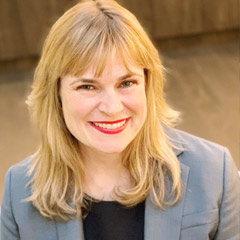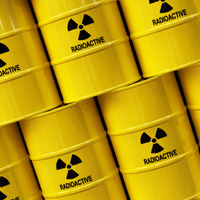Emma Belcher, Director of Nuclear Challenges, reflects on the need to proactively challenge the status quo through moments of transition.
The world’s nuclear problems are not neat and tidy. They are complex and span from immediate concerns about the continued deterioration of the United States’ relationship with Russia, North Korea, and Iran to the need to reduce and eliminate the threat that nuclear weapons pose in the longer term. And in between current crises and goals that will take decades to reach, there is the difficult task of anticipating the challenges or opportunities we will face after the 2020 elections and the years that immediately follow.
Balancing short-, medium-, and long-term goals is always a challenge for philanthropy, and it was front of mind for our Nuclear Challenges team in 2019.
It will not surprise you to hear that we focused most of our grantmaking on addressing pressing, urgent concerns. In 2015, in an effort to focus our grantmaking on a specific strategy to reduce nuclear risk, we made it our goal to end production and eliminate stockpiles of weapons-useable material. In 2017, we adjusted our strategy to focus on defending the principles of nonproliferation, disarmament, and peaceful uses of nuclear technology, which had come under grave threat. This year, we pursued this work aggressively, and while it is hard, choosing to support it is not. It is necessary and urgent.
In contrast, it is more difficult to make grants that look beyond these immediate concerns because it is impossible to predict where we will be in the next five years. One year from now, we may be marking the start of a second term for President Trump or getting ready for an entirely new administration, potentially with a fundamentally different approach to national security, international relations, and nuclear weapons. Five years from now, we could be facing a similar transition following the 2024 election.
Yet if we wait until these moments of transition arrive, it will be too late to truly take advantage of new windows of opportunity. It takes time to develop, refine, and prioritize policies and build needed support for their implementation. Although it is a gamble, and though it is difficult to tear our attention away from immediate concerns and crises, we are investing part of our funding in this crucial work. Right now, our grantees are seeding policies, which react to multiple possible scenarios, that we hope a U.S. administration can implement in the next few years.
When we know the outcome of the 2020 U.S. election, we will gather our grantees and seek expert opinions to determine the implications for our grantmaking.
Beyond this lies another challenge: how do we plan for the future we want, regardless of what happens in the next few years? In our effort to address the urgent and short-term, how do we not miss opportunities to seed a longer-term vision that reaches our ultimate goals of ending production and eliminating stockpiles of weapons-useable material?
Right now, nuclear policy is built on deterrence theory, which suggests that the balance of nuclear weapons between countries prevents their use and keeps the peace. It is largely accepted as conventional wisdom despite serious questions about its effectiveness. It assumes rational action by leaders and does not allow for mistakes or human error. Since its conception, deterrence theory has provided the rationale for tens of thousands of nuclear weapons and trillions of dollars of related military spending. If we continue to rely on this governing principle, it becomes difficult to promote an end to production and elimination of stockpiles of the material that feeds these weapons. It is time to challenge this status quo and ask whether this system—which leaves the world under constant threat—is the best we can do.
We have spent some time this year with grantees and partners thinking about this. We are seeing an interest in tackling the topic from those at the beginning of their careers to those approaching retirement. There also is enthusiasm to include voices of individuals who have traditionally been excluded from nuclear policymaking and could bring creative solutions to long-standing challenges.
The result is exciting work that tests the assumptions underpinning deterrence theory. Our funding of this work is a starting point to help us build a new vision that can serve as a guiding star for nuclear policy in the years ahead—something that can help ensure we never lose sight of where we need to go, even as we tackle short- and medium-term challenges.
Of course, policy traction will depend on the political climate, but the potential for this area of inquiry is extraordinary. As we move into the new year, the challenge of effectively balancing short-, medium-, and long-term goals will persist. It is a challenge we welcome as a critical part of reducing the threats posed by the world’s most dangerous weapons.
Nuclear Challenges grantmaking ›
Nuclear Challenges strategy ›
Other Directors' Reflections ›




